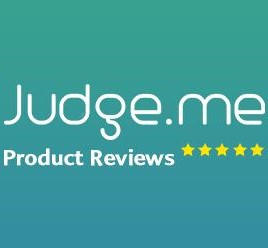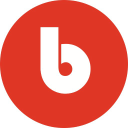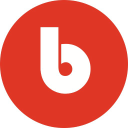Starting A Bed Sheet Business Making $600K In First 8 Months
Hello! Who are you and what business did you start?🔗
I’m Colin McIntosh, Founder & CEO of Sheets & Giggles, a pun-based, eco-friendly bedding brand that launched in May 2018 on Indiegogo with our first product: lyocell bed sheets made from eucalyptus trees.
Our bedding is softer than cotton, more breathable, and more moisture-wicking, and it also uses up to 95% less water than cotton sheets to make. (Major trade-off: it’s generally more expensive than cotton, and you have to take better care of it [no bleach, cold wash, low heat, etc.].)
In our first 6 months in business, we received over 6,000 orders and nearly half a million dollars in revenue, and in September we won first place at Denver Startup Week 2018. In October, we began shipping preorders and got about 4,500 out the door, and we’re still catching up with demand! Nearly ⅘ of our customers are women, and more than half are in their 20s and 30s.
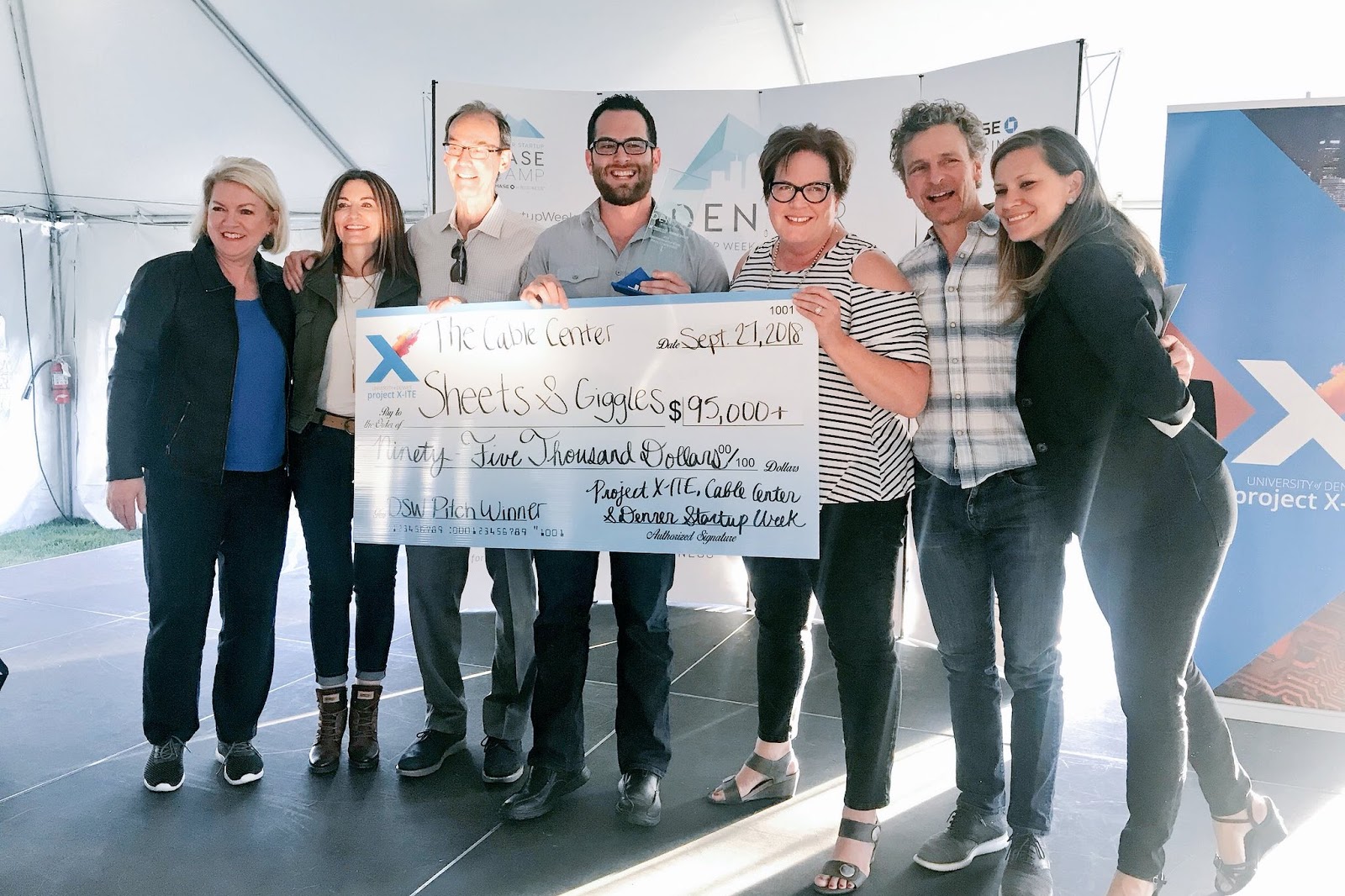
What's your backstory and how did you come up with the idea?🔗
From 2015 - 2017 I ran biz dev at a Techstars-backed wearable tech startup in Denver. We raised a $3M seed round, grew to a full-time team of 25, and were in most major retailers in the US… and then it all abruptly ended in September 2017. It was pretty devastating, and I can’t really go into the reasons why it ended, but leaving retail partners at the altar without holiday inventory was particularly upsetting for me as the partner lead.
Build a business model first, not a product. So many entrepreneurs spend time and money building a solution for a problem they perceive without ever validating that it’s a viable business.
After that experience, I decided that the timing was about as good as it was going to get for me to found a company: I had a great CO network, had just been through Techstars, was on the founding team of a company that launched two crowdfunded physical products at nationwide retail, and had built a skill set in marketing and distributing physical products. That said, I didn’t have much money in my bank account (working at startups will do that to you), and I didn’t want to raise VC right off the bat, so I knew I had to do a crowdfunding campaign.
My criteria for a new business
I decided that I needed my own physical product brand to sell, and I started by listing the criteria for my new company. I wanted:
- A large commodities market (so I didn’t have to build a category out of thin air), but one that I could differentiate meaningfully in.
- A highly fragmented market with no clear leader
- A market with no brand loyalty or affinity
- A market with little brand differentiation
- A product that was traditionally physical retail that I could help bring online with a DTC model
- A product with a low-complexity supply chain (i.e., no electronics or software components)
The domain
I really believe that a good brand name and .com can make or break a company, so I looked through all the domains I owned to see if anything matched. I owned SheetsGiggles.com, and I thought “Does bed sheets fit?” and it did, almost perfectly.
(Side note – I owned the domain because in the summer of 2017 I was watching War Dogs, and Miles Teller’s character tries to sell bed sheets to retirement homes that all reject his product. I couldn’t believe that his character didn’t do market research and validation before buying all that inventory, so I told my girlfriend to pause the movie so I could write a full business plan for a bed sheets company named Sheets & Giggles, and I bought the domain that night. She and I have since broken up because, well, yeah… who does that.)
In short, I built a business model I felt very passionately about, and then designed a product that I thought plugged nicely into that model.
Validating the product
In February, I then validated that people would actually pay a profitable price by initially running a few hundred bucks worth of Facebook ads to a landing page I built with Kickoff Labs and Shopify. (Link is to an old page that’s still the same, though the CTA changed after April to funnel traffic to the Indiegogo vs email capture.)
With the help of a crowdfunding agency I trusted, I targeted crowdfunding lookalike audiences, told people the expected price and launch date on Indiegogo, explained the product with some punny copy, laid out a few fun pictures we had taken at a photoshoot that cost us $500, and asked for their email.
To this day I’m still a little shocked, but 46% of people gave us their emails during this time, and we collected over 11,000 emails from interested buyers in just 8 weeks.
We also used this prep time ahead of the crowdfund to lock down a manufacturer and send them initial designs and order quantities, and on May 1 we launched on Indiegogo with nearly 500 customers on day 1 and $45,000 in day 1 funding (on a $25k goal).

Take us through the process of designing, prototyping, and manufacturing the product.🔗
Because I didn’t have any textile experience, I had to hire outside consultants to help me design, develop, and test our products.
I gave them my high-level criteria (lyocell for sustainability, has to be super soft, has to be premium, must be durable, must be made by a socially conscious manufacturer, etc.), and they created my tech packs and other designs for me.
We sourced our manufacturer at market week in NYC in March 2018, and we left with a handshake agreement with an Indian company who hit all our criteria more so than anyone else. I had a blast visiting them to inspect production in June (fun fact: India is hot in June). We had massive fabric rejections due to poor quality in our first production runs, which lowered our overall sales potential for the year and set our ship date back, but we had to make sure our product was perfect.
The unboxing experience
I also had a particular vision for our packaging centered around one goal: because we were a DTC company and wouldn’t do physical retail in year 1, we needed to focus entirely on an incredible unboxing experience that made the product feel as premium as possible.
Outside: a white box, nice wax coating, logo front and center with no other copy, easy to open, nice and sturdy.
Inside: make people smile from the get-go, have a social call-to-action, include free extra surprises (a knapsack that wraps the sheets and an eye mask), put funny copy all over the place, and add a donation bag that people could use to donate their now-defunct cotton sheets (sheets & blankets are the #2-most-requested item at shelters behind socks).
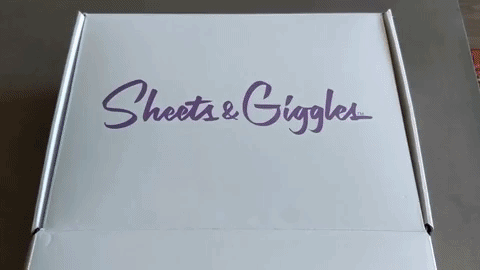
Describe the process of launching the business.🔗
We founded S&G in October 2017, but we started work in earnest on January 2, 2018. I actually have a longer blog post on our site from Week 2 about what we did from October - January.
We spent our first 3-4 months building a brand identity map, getting the bare bones website set up, getting a logo finalized, refining our messaging, and setting goals for “what success looks like.”
I also hired a part-time intern and a marketing agency that would help with our crowdfunding campaign (that’s now my agency of record), and I hired a PR agent in Denver that I knew through the grapevine.
I think the single best thing we do to drive conversion is answer all Facebook comments and messages within minutes.
I brought on a small 2-person product team to design the products I had envisioned, and in March we found and signed our manufacturer in NYC at Market Week (met with a bunch of manufacturers for interviews, described what we needed, got to know people, sampled different fabrics, and left with a handshake deal).
In February, we did our first photo shoots, and in March we did a video shoot in preparation of our 30-day Indiegogo that was planned for May 1. Luckily I knew people locally in Denver that I could ask for photography and videography help, and all in all we spent about $3,000 making our initial collateral for the Indiegogo.
We had a single set of white sheets that we used for all our lifestyle and product shots, and because I’m an idiot I didn’t even wash them or iron them, so we’ve got visible creases in all the pictures that we use to this day :p
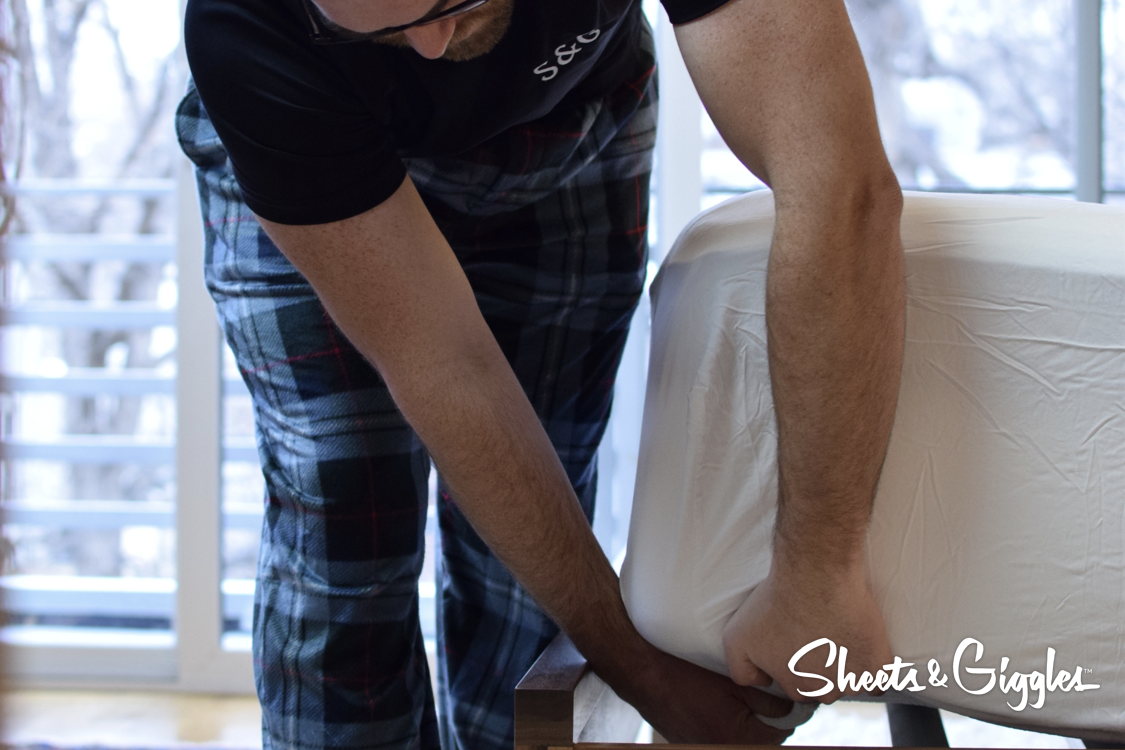
Prepping for crowdfunding campaign
We budgeted 10 weeks to get ready for our Indiegogo (that’s a must), and we spent that time running Facebook ads to landing pages that were set up for email capture.
Working backwards from a $100K goal and an estimated $100 average backer value, we knew we needed 1,000 backers, and we knew that we had to get about 30% of those (300) in the first 24 hours to be successful.
Assuming a 3% conversion on our email list, that meant we had to get 10,000 emails to ensure 300 day 1 customers. I budgeted $1 - $2 per email lead, and I hoped to convert at a high enough rate to come in under that (ended up being $0.89 per lead).
Building our email lists
During this prep time, we used Kickoff Labs for our landing page software, and we ran a social sharing competition so people would share our landing pages organically as well (we got about 15% of our leads organically).
We ran about 50 different ad variants to about 12 different landing pages to find out what converted the best (different images, headers, subheaders, text, value props, calls-to-action, layouts, etc.), and then we picked the best combo of 4 ads and 2 landing pages that converted best.
We ended up capturing 11,000 emails in 10 weeks at about 46% conversion, which was insane – that’s when I knew we were on to something.
Building hype and the launch
We sent out one email per month to our list to keep them engaged, got customer feedback in the form of surveys (which colors to they want, most popular sizes, etc.), and that informed which colors and sizes we chose to make for our launch (had to hone in on 25 SKUs tops to ensure limited logistical complexity).
Ahead of May 1, we sent out “72 hours” and “night before emails,” and on May 1 we ended up raising $45,000 on our first day from over 400 backers! (We also did a ton of product development and testing / approvals, designed and approved packaging, placed our first PO in April with a deposit to our manufacturer, and spent time planning out the cadence of our Indiegogo communication and marketing.)
In June I traveled to India to inspect production and our facilities, and I made sure the production quality and pace was what we needed to succeed. Love our Indian partners.
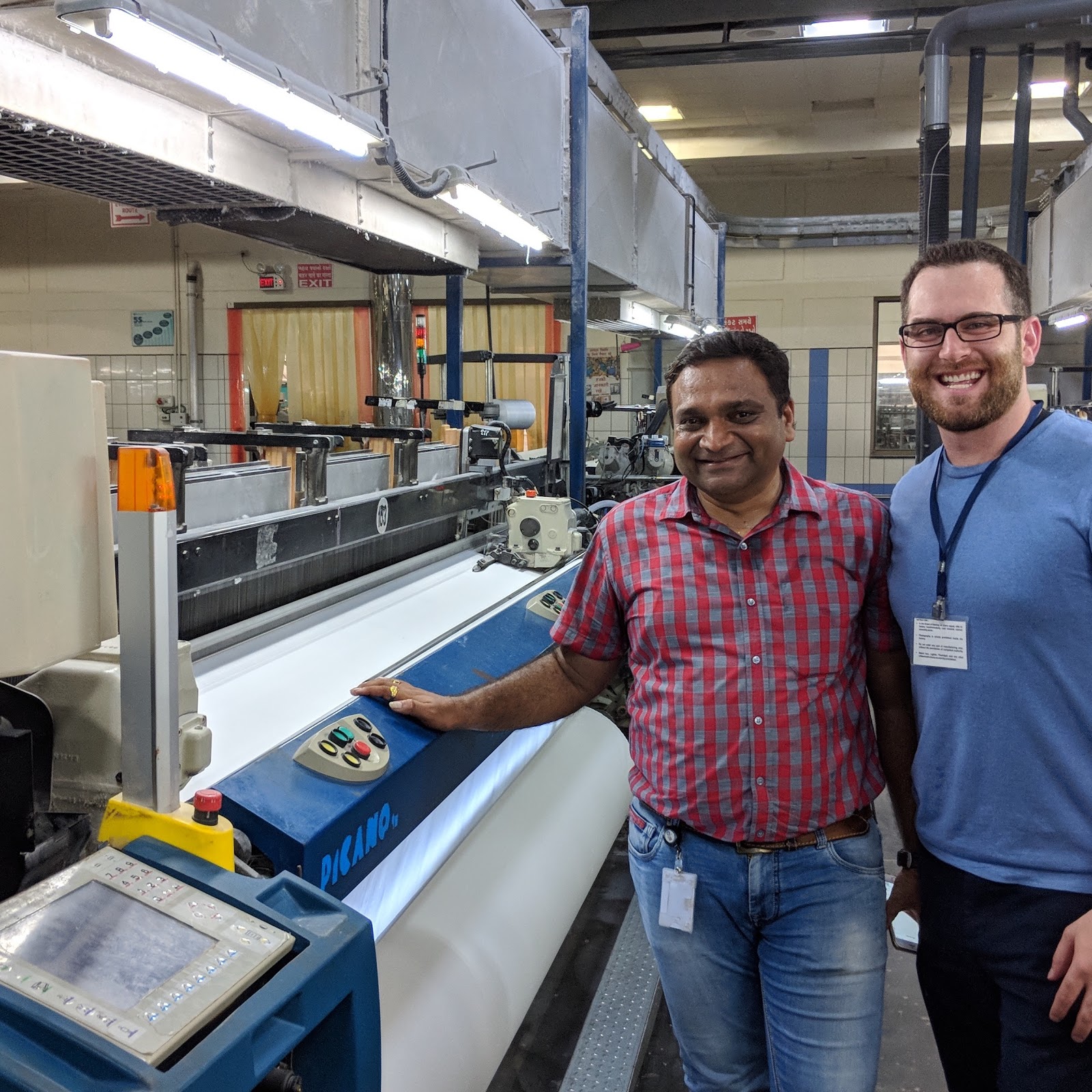
We began shipping thousands of preorders on October 1 (pretty much all 5-star reviews!), and now we’re just holding on for dear life through the holidays.
Since launch, what has worked to attract and retain customers?🔗
Social media engagement
I think the single best thing we do to drive conversion is answer all Facebook comments and messages within minutes. I have the Pages Manager app on my phone (it’s terrible but it at least works), and when people comment on our ads we respond immediately to almost every single comment with on-brand straightforward answers, questions, jokes, pics, gifs, etc.
I honestly think that some people are deciding to buy before they ever click on our ads based on our answers to questions and interaction with commenters.
A lot of people (especially customer service folks) don’t understand that you’re not just responding to the person who asked; you’re writing marketing language to convert the thousands of people who will read the comments before clicking.
SEO
We have about 50-50 paid/organic traffic right now. On the SEO side, we’ve worked to become the #1 result for “eucalyptus sheets” (ahead of Bed Bath, even) and top 5 for “lyocell sheets,” which are both small but very targeted organic search queries. Good steady revenue flows.
We also have a ton of word of mouth with our customers and are starting a referral program that gives people 10% cash back for sales they refer when they share S&G with others and $10 off for their friends that use their link. (It’s already been used by large media outlets with good success.)
Only funny emails
We also almost never email our list of customers or broader email list. If we email people (maybe once a month), it’s something objectively funny that will make them laugh (and may not even have a CTA), or it’s worth their while in the form of a targeted sale. (I.e., “Hey you love your sheets, did you know they also make a sheety gift?”)
Purple Friday
Our most successful day post-Indiegogo has been Purple Friday (PF), which we did on 11/16 (Friday before Black Friday). We got over $22K in sales in one day, and to accomplish that we ran a 30% off sale (normally 15% off for preorders) and pushed 24-hour ads to Facebook to spread the word to our followers, general audiences, existing customers, and prior site visitors.
We also sent out an email about PF to our existing customers that focused on giving the gift of S&G to someone eco-conscious in their life. This strategy allowed us to preemptively tap into holiday purchases without competing with everyone’s Black Friday (BF) sales; we were able to elevate our brand “above” the insanity of BF; and we were still able to double dip and participate in Black Friday and Cyber Monday because of the natural increase in conversion on those days (but we didn’t send out emails about those days).
Customer service
We bend over backwards for customer service; I literally put my cell phone on the contact page and get about 10 calls a day.
- Defects? Free replacement.
- Delayed shipment? Amazon gift card.
- Follow us on Twitter / Insta / FB? You’re gonna get free money, free pizza, and free sheet.
Reviews
And of course, the social proof that comes from reviews has been crucial.
In my opinion, our reviews are responsible for upping our conversion rate from 4% in August (no reviews, pure preorder) to 5% in October (first reviews) to 6% in November (more reviews).
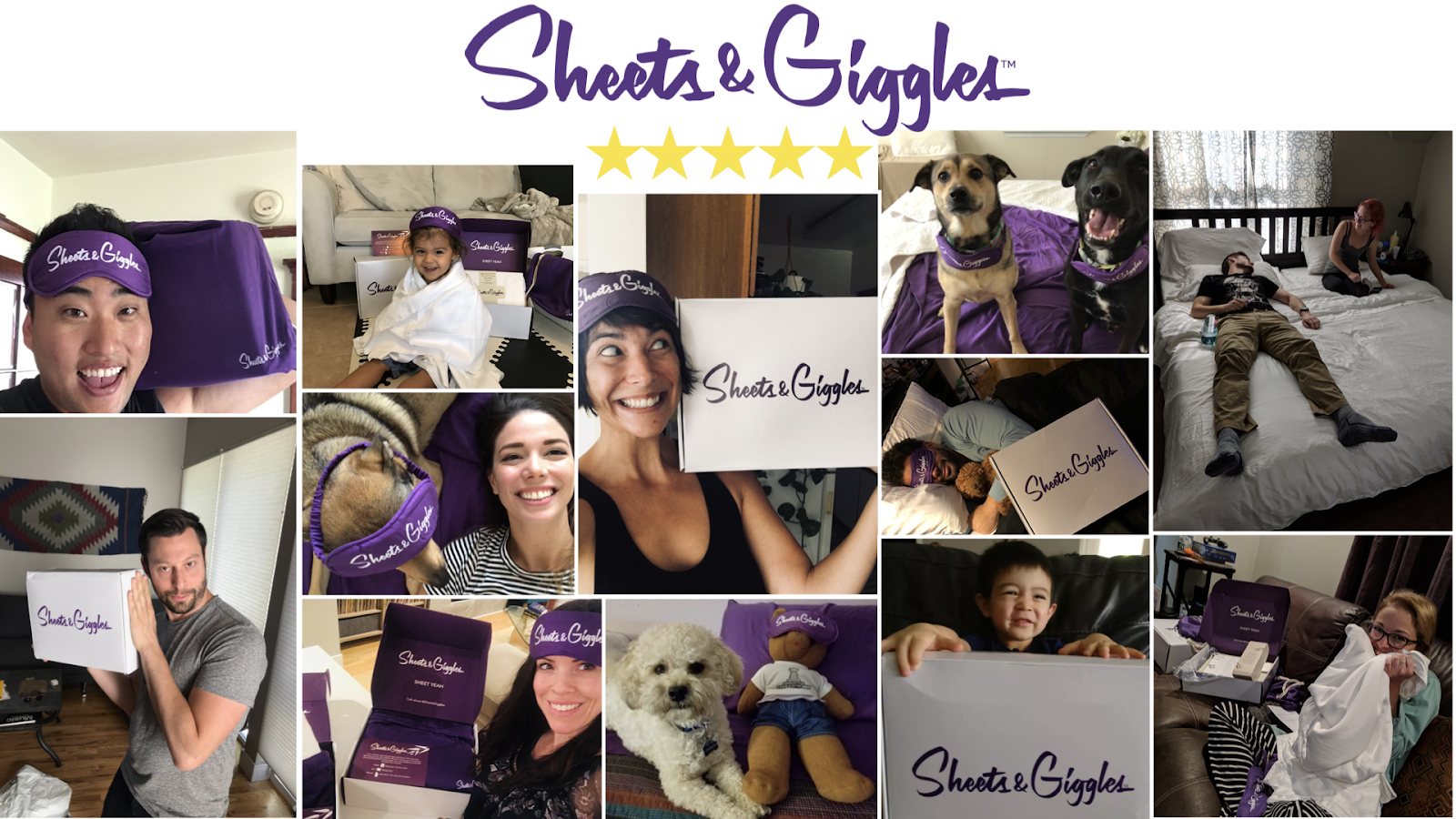
How are you doing today and what does the future look like?🔗
We operate profitably, and in 2018 we’ll grow at a 25% compound monthly growth rate (60% from last month).
We’ll probably end the year at about $600K in revenue (constrained by inventory), with 65% gross margins and about 10% net margins when it’s all said and done.
Our cost of acquisition is under $30 for the year, we’re converting at over 5% on SheetsGiggles.com right now, and 100% of our sales come through the site.
Average initial cart values are about $140, and lifetime values should be > $1000 if we play our cards right (38% of Americans buy new sheets every year).
Our day-to-day operations revolve around production management, customer service, digital marketing, website improvements, content creation, fundraising, and logistics.
Next year, we’ll expand our product lines to new sizes (Twin, Split King), add new colors (red, green, beige), and add our first non-bedding product: a eucalyptus lyocell throw blanket. We also plan to dip our toes into international sales next year with the UK, Australia, and Canada, and likely the EU too (gotta start translating the pun somehow).
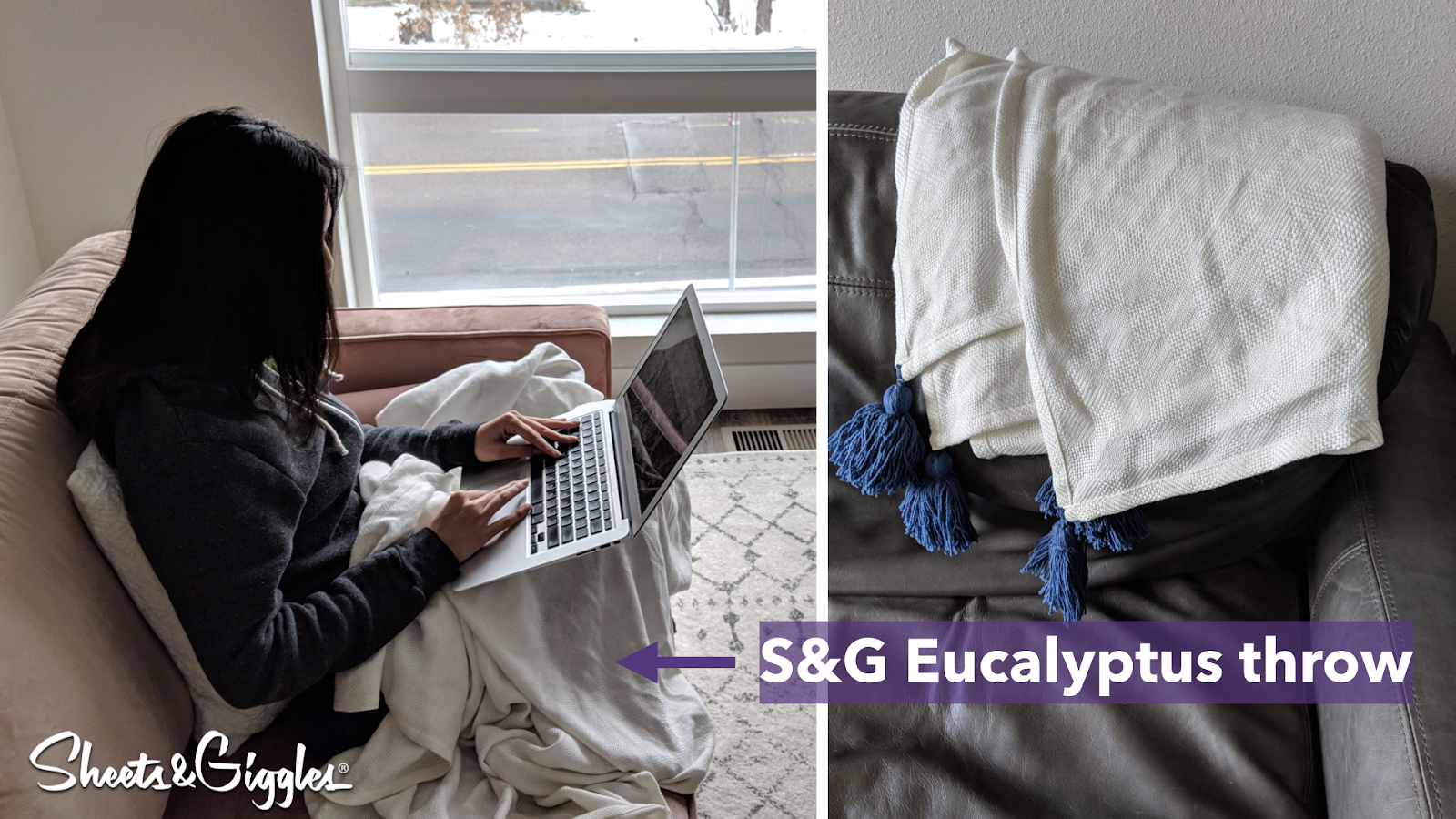
Short term, I start paying myself in December (sheet yeah, only took a full year...), and next year we plan to grow 4-5x in revenue. To accomplish that, we’ll expand to a couple new channels without going overboard or doing physical retail (Amazon in January, and HSN or QVC would be my Q3/4 target).
I can talk for hours about why we’re not doing physical retail. Main reasons:
- Their margin share requirements for this category are ~40-60%, which means our “cost of acquisition” for that channel will at least be the margin cost, which is 2x our standard CAC.
- For little-known brands that don’t “sell themselves,” merchandising costs add up super quick. I.e., if you’re a new company and need to educate people on your product to sell through, you need to spend money on displays, which can wind up being hundreds of dollars per store. If you’re in 1000 stores and you’re merchandising correctly, you’ll spend over $100,000 before you sell a single unit.
- You need to train sales associates to talk about a product well, which costs money and will give you little long-term ROI (high turnover in sales associates). I can’t tell you how many bedding stores I’ve walked into and asked questions about competitors’ brands, only to be given totally incorrect information with poor sales efforts (I’m weird and do this too often).
- Your packaging needs to “sell” the product in person, or it at least needs to grab someone’s attention and make them stop. Ours is a clean white box with our brand name on it; it would be DOA at retail until we revamp it.
- Return policies can cripple a startup. If we sold 50 units into 100 stores on Nov. 1, that’s 5,000 units and hundreds of thousands of dollars, right? Nice. Except if on Jan. 1 each store still has 25 units on hand, those 2,500 units are coming right back to you, and you better have kept half the money you from that PO in escrow. Otherwise, you’re cooked. (And if you think you can negotiate away return rights, they’ll just dump your remaining inventory on Amazon, stealing the buy box away from you and harming your brand in the process.)
- Philosophically, instead of rushing into retail headfirst, I think it’s strategically wiser to spend a few years building a well-known brand that will sell itself at retail and that will give you more supplier power when negotiating with retailers.
As for what long-term success looks like, I envision storming the last Bed Bath & Beyond in a sort of Helms-Deep-style raid.
Through starting the business, have you learned anything particularly helpful or advantageous?🔗
Habit: I always try to have an action bias, and I try to focus on getting items done that “unlock” my team members’ work. If someone needs me to write some copy that allows them to do 4 hours of work, I’ll take care of that first thing in the AM. Or, if someone needs to be trained on logistics software to do customer service, I know my life will be made easier if I train them ahead of tackling my must-do’s for the day.
Don’t hire people you know are assholes just because you need someone to do the job. Suffer and do it yourself, or delay the launch, but don’t hire assholes. It’ll hurt you more in the long run.
Lesson: We should have been a C-Corp from day 1 (we were an LLC at first). Corporate transitions cost attorney fees.
Unforeseen problem: Political season drives up the cost of Facebook ads big time (50% increase).
Lesson: Don’t hire people you know are assholes just because you need someone to do the job. Suffer and do it yourself, or delay the launch, but don’t hire assholes. It’ll hurt you more in the long run.
Lesson: You get lonely, and personal relationships will suffer. Make time for family; why even start a business if you can’t spend time with important people in your life?
Good decision: Stay heads down on building a business that’s revenue-positive and growing, and investment will come to you.
What platform/tools do you use for your business?🔗
Google Sheets is my everything; I obsessively update my pro forma before I go to bed every night with daily numbers.
Shopify is an amazing platform and I love that they calculate and collect local sales tax for you.
Bold Cashier + Bold Upsell are the best apps on Shopify for upselling after someone has already made a purchase, which is incredibly valuable (about 20% of people add something else to their cart after they’ve already given you money, which increases average cart values).
I use Judge.me’s Shopify app for my product reviews – best cheap app by far and allows people to post verified reviews, pics, videos, edit reviews, etc.
Hypervisual Page Builder is the perfect Shopify app for building out landing pages that convert.
Streak is great – I track leads (out of stock requests, etc.) all from Streak.
Lastpass for password management.
Slack for team comms.
MailChimp for email.
My logistics software… I would not recommend and we’re switching. Open to suggestions.
What have been the most influential books, podcasts, or other resources?🔗
It’s embarrassing, but I don’t really read books at this point. I hate that I’ve become this person who just works when I’m awake, and I need to make time to read more. I do love the Dan Le Batard Show podcast – it keeps me up to date on sports and pop culture and is my lifeline back to Miami, where I’m from.
Rand Fishkin did a 40-minute talk in September of this year that was stellar and that I think is a must watch for someone starting a business. He’s learned a lot the hard way, and you can almost hear the desperation in his voice basically telling you “learn from my mistakes.”
The best thing I ever heard from him is something like “If you make $10M in revenue, you hear crickets. If you raise $10M, your family comes out the woodwork, your friends trip over themselves to congratulate you, your team throws you a party, you become the toast of the town, TechCrunch writes an article about you. This is how we train people to raise money and not make money.”
My best resource has been and continues to be the Techstars network (went through Techstars in 2015 in Boulder). I’m on the Colorado Techstars alumni board and love that I have access to the network for mentorship, investment, amplification, and recruitment.
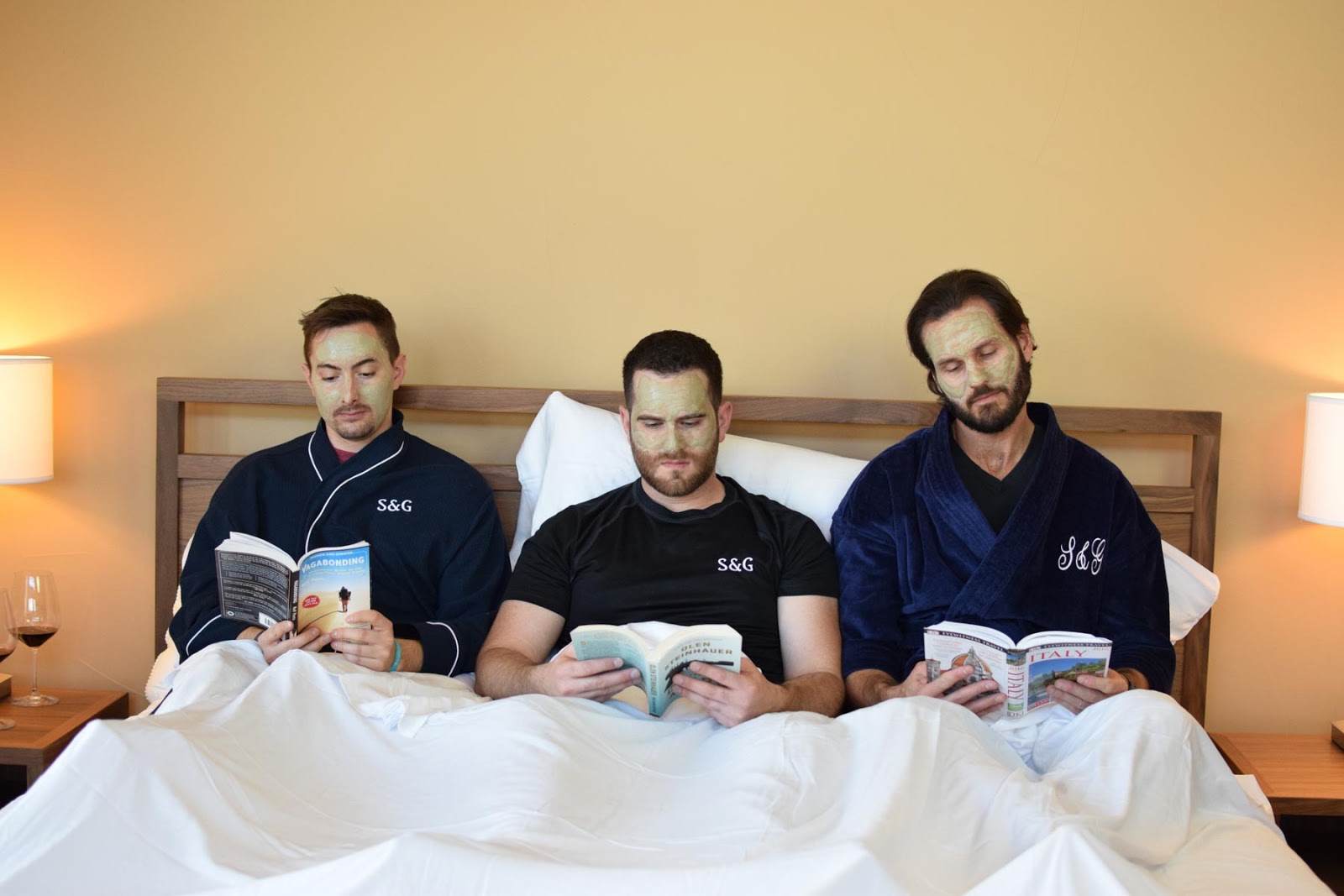
Advice for other entrepreneurs who want to get started or are just starting out?🔗
My #1 thing is: build a business model first, not a product. So many entrepreneurs spend time and money (lots of time and lots of money) building a solution for a problem they perceive without ever validating that it’s a viable business.
Make sure you feel passionately sure that the business model is sound – sustainable margins, strong product-market fit, engaged potential buyers, and long-term growth potential.
Spend a few hundred bucks on Facebook ads to a landing page that describes what you’re building – are people giving you their email to lock in to the Kickstarter price? No? Then you have to go back to the drawing board before you spend more money and figure out if your value prop isn’t good enough, if the product vision needs improvement, if your proposed price is too high, or if your marketing just sucks. The last thing you want to do is to spend $100,000 building something over a year of your life and then find out nobody wants it.
I genuinely think that people do the opposite of this because when you work on a product, no one can tell you no. In your mind’s eye, it’s going to be a huge success, and you can stay heads down on building it. You can envision a perfect future. The moment you begin selling and someone tells you no, that rejection stings worse than anything in the world, so I think people avoid that inflection point (sales) for as long as possible to avoid possible rejection while they work on building the “perfect” MVP.
Going headfirst into sales / gathering leads can actually really help you, though. You’ll gather a user base who can give you feedback on how they want you to build the product, and more importantly you can go to an investor and say, “I have 500 leads signed up who will give me money if I can give them this thing. Give me money to build this thing.” It’s a much stronger value prop than “I want to build this thing and here’s why it makes sense,” and it doesn’t cost you that much to do (costs far less than product development).
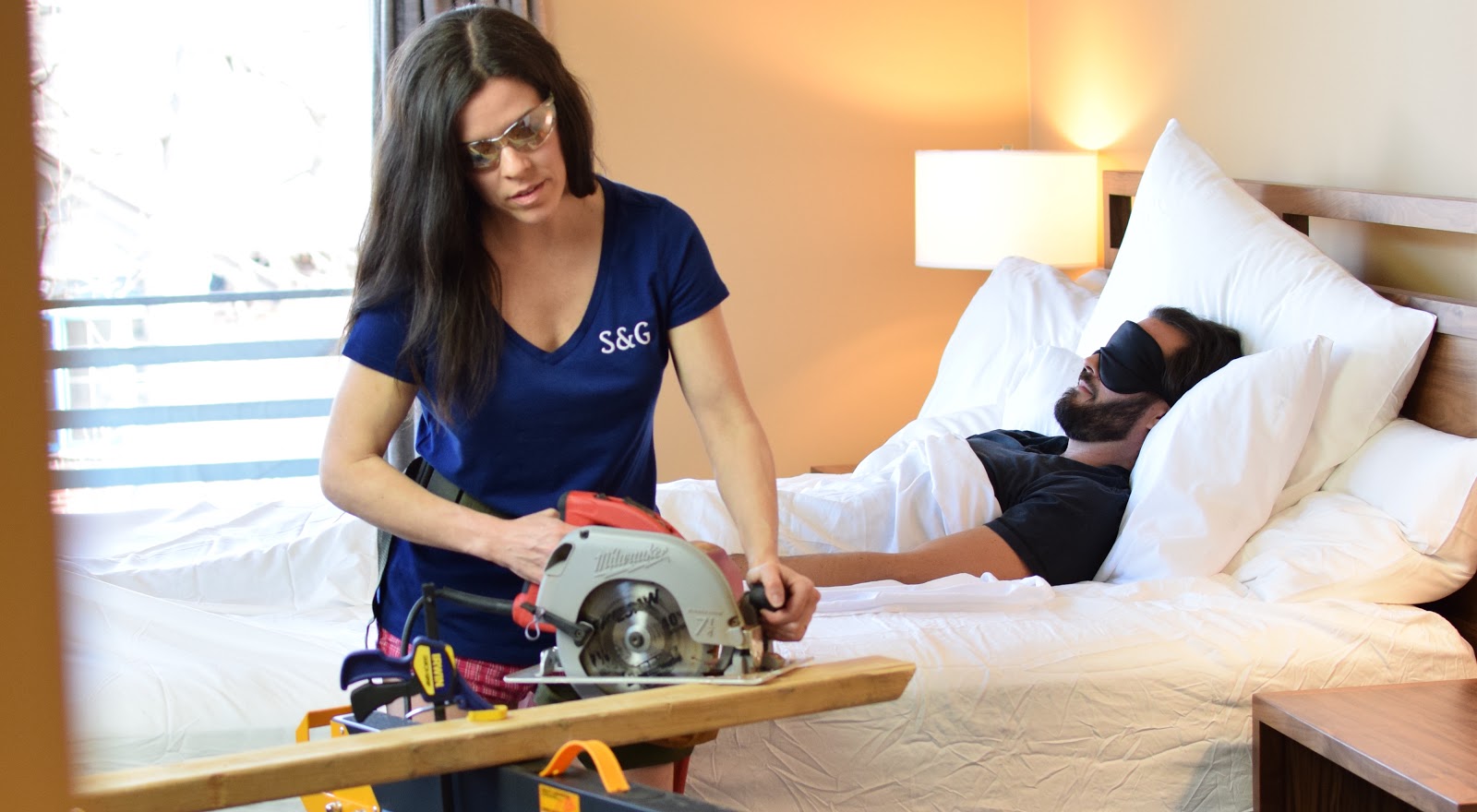
Are you looking to hire for certain positions right now?🔗
Yes, I’m hiring in marketing (someone who can do everything including creative, copywriting, and digital), supply chain management, logistics (inventory management, international freight, and domestic shipping), and customer care.
Where can we go to learn more?🔗
SheetsGiggles.com or @SheetsGiggles anywhere on social, including /u/SheetsGiggles on Reddit. (I have a weirdly viral post on resumes on Reddit from back in February.)
My email is colin@sheetsgiggles.com if anyone wants to drop me a line (787 unread and counting… sorry if I don’t get back right away!).
Oh - also a cool anecdote! I was invited by the dean of Emory University's BBA program (#15 in the country, for what it's worth) to teach their Entrepreneurship classes for a day this fall in October. I'm a 2012 Emory BBA grad so it was a thrill for me to be invited back to take over the class for a day.


Download the report and join our email newsletter packed with business ideas and money-making opportunities, backed by real-life case studies.

Download the report and join our email newsletter packed with business ideas and money-making opportunities, backed by real-life case studies.

Download the report and join our email newsletter packed with business ideas and money-making opportunities, backed by real-life case studies.

Download the report and join our email newsletter packed with business ideas and money-making opportunities, backed by real-life case studies.

Download the report and join our email newsletter packed with business ideas and money-making opportunities, backed by real-life case studies.

Download the report and join our email newsletter packed with business ideas and money-making opportunities, backed by real-life case studies.

Download the report and join our email newsletter packed with business ideas and money-making opportunities, backed by real-life case studies.

Download the report and join our email newsletter packed with business ideas and money-making opportunities, backed by real-life case studies.


